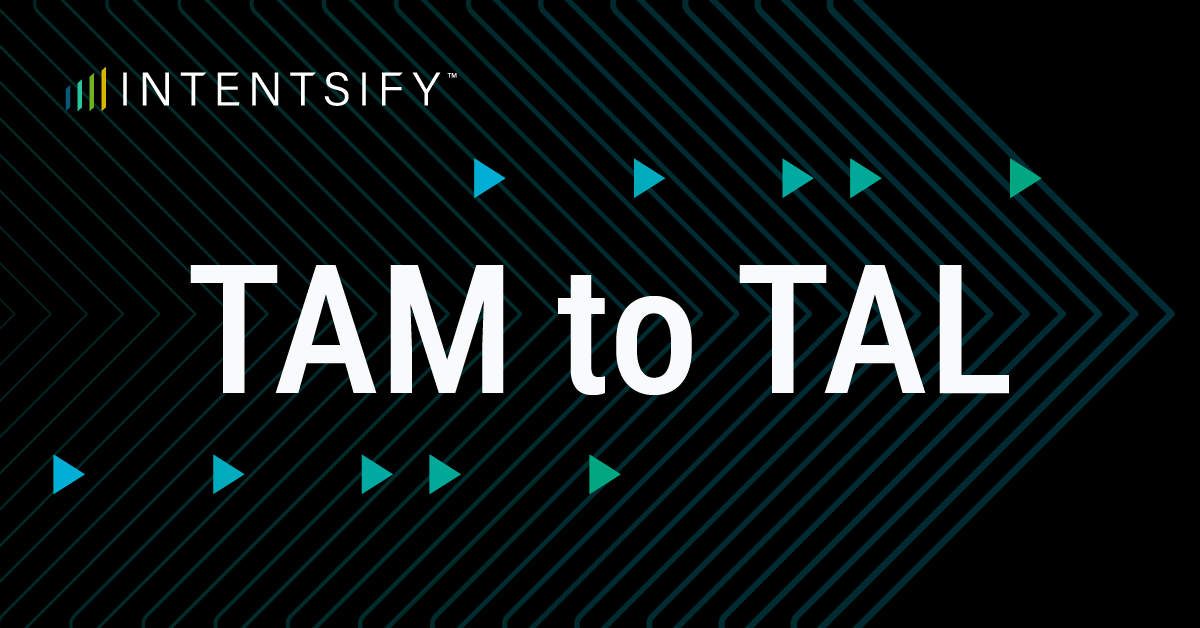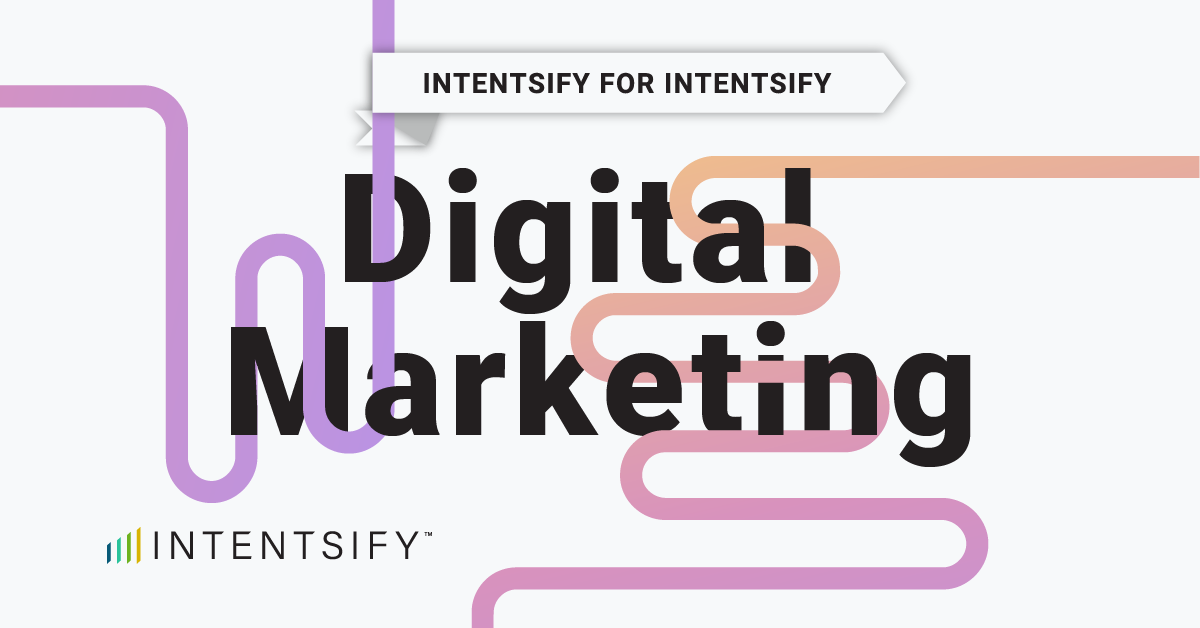Many marketers are familiar with the concept of Total Addressable Market (TAM). But if you’re like most, you probably have a nagging feeling that it isn’t giving you the most actionable insights to maximize your marketing ROI.
And you’re right!
TAM’s overly broad scope likely causes you to spread your marketing effort too thin. It doesn’t tell you which accounts are in-market and will most likely purchase your products or services. It may even divert your resources from nurturing high-value relationships and concentrating on accounts with the highest long-term revenue potential.
TAM offers a high-level view but lacks actionable insights into each segment’s or account’s behavior, needs, and pain points. The lack of precision often results in a high cost per acquisition (CPA) because a substantial portion of the marketing budget is spent on reaching prospects that are not in-market or unlikely to convert into customers.
So, should you toss TAM out like a hot potato?
Not really. But instead of using TAM, data-driven marketers refine it into a Target Account List (TAL) through pre-segmentation to streamline their marketing efforts and direct their resources toward the most promising prospects. Let’s explore the power of pre-segmentation in marketing, the key steps to create an accurate TAL, and how to use it to support your B2B marketing strategy.
The Power of Pre-Segmentation in Marketing
Pre-segmenting your TAM breaks down the market into smaller, manageable segments to mitigate the inefficiencies of spreading your resources too thin. The process creates subsets based on specific characteristics, behaviors, or customer lifecycle stages.
By analyzing research patterns and understanding where potential customers are in the buyer’s journey, you can create a TAL with in-market accounts most likely to be interested in your solution and receptive to your marketing outreach.
The Benefits of Targeting a Pre-Segmented TAL
By focusing on a well-researched and segmented list of high-priority accounts, you can allocate resources more effectively to accelerate growth:
- Enhance personalization: A focused approach allows you to invest more resources per account to support personalized interactions and drive engagement.
- Increase conversion rates: A segmented TAL yields a higher conversion rate because it helps you focus on pre-qualified accounts with high purchase intent.
- Improve resource allocation: A list of high-potential prospects allows you to allocate your sales and marketing resources to campaigns with the highest ROI.
- Accelerate sales cycle: Accounts on a TAL typically require less education and nurturing since they’re aware of their challenges and actively seeking solutions.
- Improve customer relationships: A more focused approach enables sales teams to spend more time building and nurturing relationships with each account.
- Scale ABM: A TAL allows organizations to scale their ABM strategies for specific industries, geographies, or customer segments without losing the personal touch.
How to Turn TAM into a High-Quality TAL
Define your ideal customer profile (ICP) based on company size, industry, revenue, location, and business model. Develop insights into your audience’s needs, preferences, behaviors, and how they move through the buying process. Also, gather data from your marketing touchpoints to understand how high-quality prospects interact with your content to identify patterns and behaviors indicative of purchase intent.
Then, develop criteria based on the ICP and data insights to identify high-priority segments in your TAM. Incorporate intent data and buying signals to find accounts most likely to purchase your solution based on their content consumption and search behaviors. You may further prioritize accounts with the highest revenue potential to boost your ROI.
Next, align sales and marketing on TAL criteria: Create a definition of what makes a qualified account for your TAL, develop a shared scoring system to prioritize accounts based on fit, interest, and buying signals, and establish feedback loops where both teams review and adjust the TAL periodically based on performance data and evolving market conditions.
How to Apply TAL in B2B Marketing
You have a list of high-potential accounts. Now what? Let’s turn the insights into action.
Identify key influencers and decision-makers in those companies and build account-based marketing (ABM) campaigns to address their pain points, challenges, and business goals. Tailor content and messaging to each account’s unique attributes to demonstrate your solution’s value and relevance.
Target digital ads to reach decision-makers at specific companies on your TAL. Our intent-activated ad solutions help you capture buyers’ attention with the right messaging at the right place and time. Also, create high-value, account-specific content (e.g., case studies, reports, and webinars) relevant to the industries or challenges faced by your TAL accounts.
Prioritize and focus your sales and marketing resources on prospects with the highest ROI potential. Use intent data to drive targeted outreach and execute multi-touch, personalized campaigns. Also, track your campaigns’ KPIs to inform adjustments and continuous improvements.
SmartTAL: Maximize the Power of TAL
A TAL offers many benefits to help focus your resources and increase marketing ROI. But it’s only as good as its accuracy.
Your TAL must be based on correct and timely information about your market. Yet, parsing through all the data can be overwhelming and time-consuming. Doing so manually may cause errors and delays that will impact the effectiveness of your efforts.
That’s why we’re excited to introduce our new feature, SmartTAL, an AI-powered TAL generation tool. It goes beyond traditional lookalike account builders to analyze your most successful accounts and generate a TAL specific to your business. The rich, timely qualitative data helps you identify prospects that align closely with your top accounts.
SmartTAL also reveals nuanced insights about a target account’s focus and recent changes that conventional data sources might miss to help you create relevant content, tailor personalized campaigns, and reach the right decision-makers.
Request a demo to see how SmartTAL and Intentsify solutions can help you turn data science into revenue science.
{{cta(‘278ea00b-ac3d-4257-8ed8-1363fbfd3900’)}}






